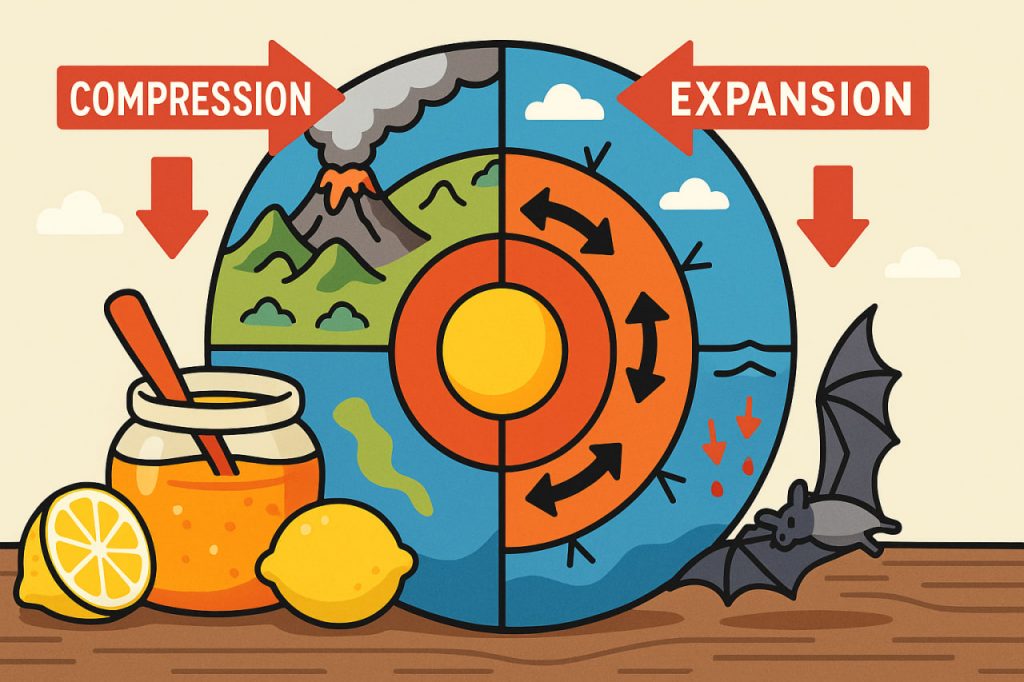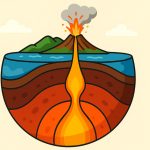Planets, including Earth, are not static objects. Over geological timescales, they undergo cycles of compression and expansion caused by internal and external processes. These cycles affect planetary structure, surface relief, and even the climate.
Internal Heat as a Driving Force
One of the main drivers of these cycles is the heat generated inside the planet. Heat comes from radioactive decay, residual energy from formation, and the movement of molten materials. As heat builds up, pressure inside the planet increases, potentially causing expansion or volcanic activity.
Cooling and Compression
When a planet gradually loses heat, its outer layers cool and contract. This compression can cause mountain formation, faulting, and crustal deformation. For smaller bodies like the Moon, cooling and compression dominate, explaining its many surface cracks and ridges.
Expansion Through Volcanism and Mantle Plumes
At other stages, rising magma plumes and volcanic eruptions push the crust outward, creating expansion zones. Mid-ocean ridges on Earth are an example of regions where expansion occurs due to mantle upwelling and tectonic spreading.
Evidence in Geological Records
Geologists study ancient rocks and tectonic patterns to identify phases of compression and expansion. For example, the supercontinent cycles (formation and breakup of Pangaea and earlier landmasses) are evidence of large-scale planetary restructuring.
Possible Future Scenarios
If Earth’s internal activity continues, cycles of compression and expansion will shape continents, ocean basins, and mountain ranges. On other planets, such as Mars, these processes slowed down earlier, leaving giant extinct volcanoes and deep canyons as remnants of past expansion.
Conclusion
Cycles of compression and expansion are fundamental to understanding planetary evolution. They explain the dynamic nature of Earth’s crust and the history of other celestial bodies. These processes highlight that planets are living systems, constantly changing across geological timescales.
Interesting Facts
The cycles of compression and expansion of a planet are part of its long-term geological and thermal evolution. These processes occur as a result of internal heat flow, gravitational forces, and phase changes within the planet’s interior. Over millions or even billions of years, planets gradually cool and contract, causing their crusts to wrinkle or crack — as seen on Mercury, whose surface bears ridges formed by global shrinkage. Conversely, expansion can happen when internal mantle plumes, volcanism, or core heating push the crust outward, creating rifts and uplifted terrain. On Earth, plate tectonics acts as a dynamic balance between these opposing forces: subduction zones drive compression, while mid-ocean ridges express expansion. Interestingly, other planets like Mars show evidence of both — massive rift valleys such as Valles Marineris reveal crustal stretching, while ancient compression zones indicate an earlier cooling phase. These alternating cycles highlight how a planet’s thermal energy, composition, and rotation continually reshape its surface and internal structure across cosmic time.
Glossary
- Compression – reduction in size due to cooling and internal pressure changes.
- Expansion – outward growth of planetary crust due to heat and magma movement.
- Mantle plume – upwelling of hot rock from deep in the mantle.
- Volcanism – eruption of molten rock from a planet’s interior.
- Supercontinent cycles – repeated formation and breakup of giant landmasses.
- Geological timescales – millions to billions of years over which planetary processes occur.


